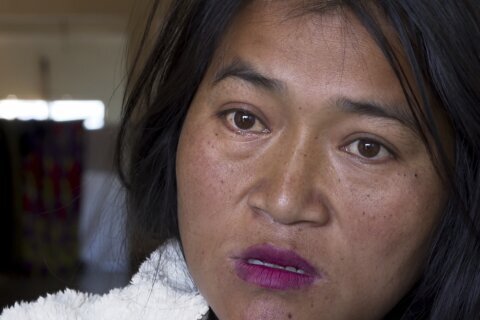COVID-19 causes many different symptoms in the body. Some of the most common symptoms that people have from COVID-19 include the following, according to the Centers for Disease Control and Prevention:
— Fever or chills.
— A cough.
— Shortness of breath.
— Fatigue.
— A loss of the sense of taste or smell.
But sometimes, patients experience longer-term symptoms, such as headaches, difficulty concentrating, memory problems and hair loss. Patients with these longer-lasting health issues and symptoms have been referred to as ” COVID-19 long-haulers.”
A survey of 3,900 COVID-19 survivors done by Survivor Corps, a COVID-19 survivor support group, found that 32% of respondents reported hair loss, says Natalie Lambert, an associate research professor of medicine at Indiana University School of Medicine in Indianapolis. Lambert conducted the survey for Survivor Corps.
Hair loss ranked 21 on a list of 101 reported COVID-19 symptoms in the survey. “To put this into perspective, hair loss was reported more frequently than nausea or vomiting, tachycardia (a fast heart rate) and sore throat,” Lambert says. The hair loss usually occurs weeks or months after a person has had the virus.
A study that took place in Wuhan, China, found that almost 30% of COVID-19 survivors had hair loss that started during the infection or soon afterward, according to a report this year in Clinical Microbiology and Infection. Most of those experiencing hair loss were female.
Actress Alyssa Milano took to Twitter in August to discuss her hair loss after she had COVID-19 in March and April. In the video, she ran a brush through her hair and held up clumps of hair that came out while brushing.
[See: 9 Ways Your Hair Reflects Your Health.]
Hair Loss Causes
Our hair follicles are always in one of three phrases: growing, resting or shedding. The majority of hair follicles are in the growth phase at any given time. Normal hair loss is about 100 strands of hair from the scalp in one day. When too many hair follicles are in the resting or shedding phases, excess hair loss occurs, says Dr. Linda Anegawa, an internist with the virtual health platform PlushCare who’s based in Honolulu.
Hair loss beyond the norm of about 100 strands a day has a few common causes:
— Androgenic alopecia, which is genetic male or female pattern hair loss.
— Alopecia areata, which causes the hair to come out in small clumps, causing bald patches.
— Traction alopecia, or loss caused by pulling the hair a certain way repeatedly over time, such as in a tight braid.
— Scarring alopecia, a less common form of hair loss with several causes, but is also associated with the autoimmune disease lupus.
— Telogen effluvium, which is a type of hair loss related to stress.
“Any condition or exposure that disrupts the hair growth cycle, causes undue inflammation or damages the hair follicle can cause hair loss,” Anegawa says. Hair loss also can occur elsewhere on the body, not just the scalp.
For those with hair loss associated with COVID-19, it’s likely linked to telogen effluvium, says Dr. Susan Massick, a dermatologist and associate professor in the Division of Dermatology at the Ohio State University Wexner Medical Center in Columbus. Major physical stressors associated with telogen effluvium include:
— A severe illness with hospitalization.
— A severe infection with a high fever.
— Major surgery or after childbirth.
— A major weight loss.
— Miscarriage.
— Dietary restrictions.
— Medication-related hair loss. There are several drugs associated with hair loss, including certain blood thinners and cholesterol-lowering statins.
— Major life events or stressors, such as a death or divorce.
Although there isn’t yet solid evidence to link the virus to hair loss, health experts believe the emotional and physiological stress associated with the infection may be responsible for the hair loss, says Dr. Evelyn Darius, a family medicine specialist with the virtual health platform PlushCare who’s based in Atlanta. Most patients with hair loss after COVID-19 experience it two to three months after their symptoms, Darius says.
There also are patients who haven’t had the new coronavirus but who are experiencing hair loss, likely due to more stress during the pandemic, Massick says. Then there are COVID-19 patients who are losing hair and feel even more stress due to their hair loss. That could potentially worsen the problem.
With researchers continuing to understand COVID-19, there may be other virus-related causes for hair loss, Lambert says. That’s because the medical field is still learning about the underlying causes of COVID-19 symptoms. If COVID-19 hair loss is attributed only to stress at this point, it may increase the risk that patients will not get the medical treatments they need to recover fully, Lambert adds.
[See: 8 Foods for Healthy Hair.]
Tips to Manage Hair Loss From COVID-19
If you’ve had COVID-19 and you’re experiencing hair loss, there are a few tips to keep in mind.
1. Don’t panic.
As worrisome as hair loss might be, it’s a normal occurrence after physical and emotional stress. “You will not lose all your hair, the shedding will gradually stop and your hair will grow back,” Massick says. The hair loss normally may occur for about six months before slowing down. If you’re experiencing hair loss while you have COVID-19, focus first on getting over the infection, advises Dr. Lauren Kole, a dermatologist and an assistant professor of dermatology at the University of Alabama at Birmingham.
2. See a doctor.
If hair loss concerns you or if you’re losing hair in patches or clumps, see a dermatologist once you’ve recovered from the virus, Kole recommends. Dermatologists often treat hair loss, but it’s also a good idea to talk to your primary care provider about the hair loss. Your primary care provider may order blood tests to rule out other conditions that can make hair loss worse, such as thyroid disease or iron deficiency, Anegawa says. Make sure to let your doctor know about all hair loss and scalp-related symptoms, as the following aren’t typically associated with telogen effluvium, Darius says:
— Scalp burning and itching.
— Scalp pain.
— Flaking of the scalp.
3. Add more biotin, iron and vitamin D to your diet.
“These are essential building blocks required to repair damaged hair,” Darius says. Here are some good food sources for those:
— Biotin: organ meats, eggs and salmon.
— Iron: chicken, turkey, beans and spinach.
— Vitamin D: fatty fish, vitamin D-fortified milk and cereal.
Consider taking a multivitamin while experiencing hair loss as it’s sometimes caused by a vitamin deficiency, Massick says.
[SEE: Best Vitamins and Minerals for Older Adults.]
4. Try any treatments as recommended by your doctor. Biotin supplements and over-the-counter minoxidil are commonly used to help hair regrow. Topical minoxidil stimulates hair growth by increasing blood flow to your hair follicles. Don’t use minoxidil if you’re pregnant or breastfeeding. Be wary of other advertised cures for hair loss that don’t have a proven history of effectiveness.
5. Continue to monitor any unusual symptoms that occur after you’ve had COVID-19. As researchers continue to study the virus, they’ll want to hear from patients about their recovery experiences. Let your doctor know of any new or long-term symptoms. You also can share your virus experience via COVID-19 survivor support groups such as Survivor Corps, Lambert says. Some long-term symptoms such as heart and vision problems can be serious and may need further treatment.
More from U.S. News
What to Know About Using Cleaning Wipes for the Coronavirus
Myths About Your Immune System
Home Remedies Not to Try for COVID-19
Hair Loss for COVID-19 Survivors originally appeared on usnews.com







